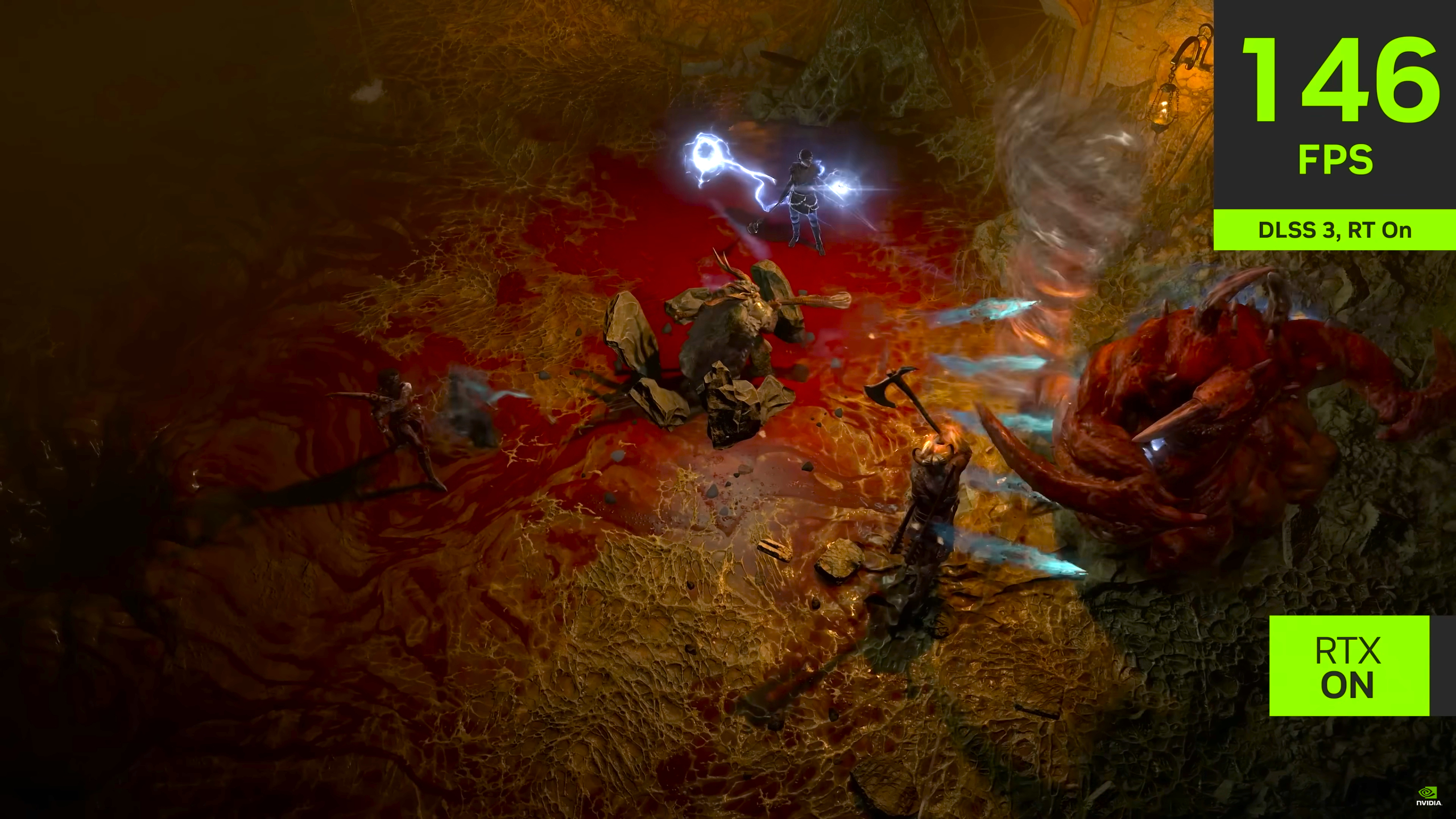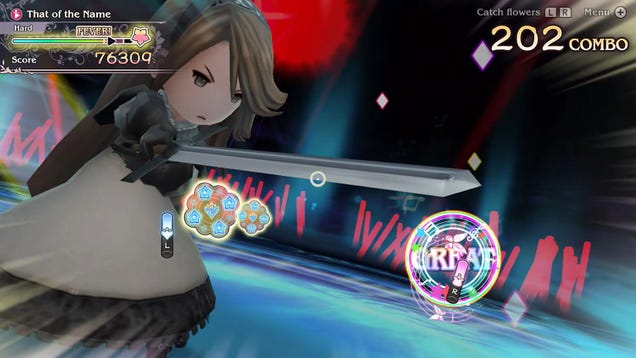
Diablo 4 looks great as it is, but some extra help in the frame rate department doesn't go amiss.
The latest update for Diablo 4 has arrived, and with it comes the much-anticipated addition of ray tracing effects. Both ray traced shadows and reflections are now available to enable in the settings menu, along with some extra goodies, so I jumped in for a bit of testing to see what sort of performance you can expect when engaging the new shinies.
New to the settings menu are several additional presets, Ultra, High, and Low ray tracing respectively, alongside some individual options to adjust the quality of ray traced shadows and reflections, and checkboxes to enable ray traced foliage and ray traced particles.
Another feature of the new update is the addition of DLSS 3 and Frame Generation, which I’ll be getting onto in a minute.
I based my benchmarking runs on the Labyrinth of Rot dungeon in the Underoot, a moody, slimy area west of Carrigar. Plenty of opportunity to test out some ray traced shadows then, and a decently high enemy count to see how all the chaos onscreen translates to your overall performance with the new options engaged.
It is worth mentioning that while this is a particularly shiny, drippy, gooey area of the game, there are no huge puddles of water for heavy reflections, although plenty of running water in the background that I did notice looked a bit better under ray traced settings.
First up, the RTX 4070 Super. This mid-range beastie has impressed us to date with its excellent 1440p performance, so that’s exactly where I tested it. Of course the RTX 4070, being an RTX 40-series card, is also able to take advantage of DLSS 3 Frame Generation, so I tested that alongside the ray tracing effects too.
As you can see, enabling ray tracing at ultra settings is quite the performance hit, resulting in just under half the frame rate compared to the figures with ray tracing off. That’s a pretty significant performance penalty, especially when the environment didn’t look all that much improved. The good news is that Frame Generation is capable of coming to the rescue, bringing the minimum frames from a slightly crunchy 47 fps up to a much more respectable 72 fps without resorting to upscaling.
So, Diablo 4 can run plenty smooth with ray tracing enabled as long as you keep the Nvidia helping hand engaged, however with it off the game can get plenty stuttery, too. As usual with Frame Generation I noticed no drop in visual quality with it on, and would much prefer to keep my frames up above the 60 fps mark in a game where smoothness in the midst of all the onscreen chaos feels paramount.
Next up, however, is the RTX 4070 Super’s much bigger brother, the RTX 4080 Super. This is a card much more capable of 4K gaming, so I opted for the full 3840 x 2160 resolution, maxed out the settings, and held my breath.
I found myself struggling to justify the performance cost.
At 4K resolution with ray tracing enabled and Frame Generation disabled, even the mighty RTX 4080 can struggle, with 1% lows of a mere 29 fps. That’s in stark contrast to the ray tracing disabled figures though, even with Frame Gen off, where the big Nvidia card can happily keep the action in the 70-90 fps range.
Enable Frame Generation and the results are better, although with ray tracing on I still saw regular dips below the 60 fps mark. With Frame Gen turned on and ray tracing off, however, the RTX 4080 soared well above the 100 fps marker, which is a nice improvement if you care not for ray traced baubles and effects.
And really, in this game, you shouldn’t. I’ve spent a total of 48 hours in Diablo 4 since launch—a paltry figure compared to some, I’m sure—but running around some of the more familiar environments and paying attention to the lighting and reflections with ray tracing enabled, I found myself struggling to justify the performance cost.
(Image credit: Future)
Best CPU for gaming: The top chips from Intel and AMD.
Best gaming motherboard: The right boards.
Best graphics card: Your perfect pixel-pusher awaits.
Best SSD for gaming: Get into the game ahead of the rest.
Of course, it all looks a bit better if you really pay attention to the shadows and the odd bit of water, but the truth is that Diablo 4’s baked-in lighting combined with the visually dense environments looked great to begin with. I also noticed the odd bit of traversal hitching since the new update, which I don’t remember being an issue in versions past, even with ray tracing turned off.
While the the lighting and reflections do gain a certain something in places, once you find yourself in the middle of the action, juggling your buffs, keeping an eye on the mini-map, and looking out for your next route, I doubt you’ll really appreciate the effect.
Still, Frame Generation is a really nice feature to have, and pulls off its usual magic trick of significantly boosting your frame rate while delivering no perceptible loss of visual quality, even when the action gets truly frantic.
A mixed bag of an update then. Ray tracing effects in D4? You can keep ’em, but I’ll take the extra frame rate boost, please. Those gory, dingy environments always looked great to begin with, but anything that helps keeps them silky smooth is more than fine with me.





